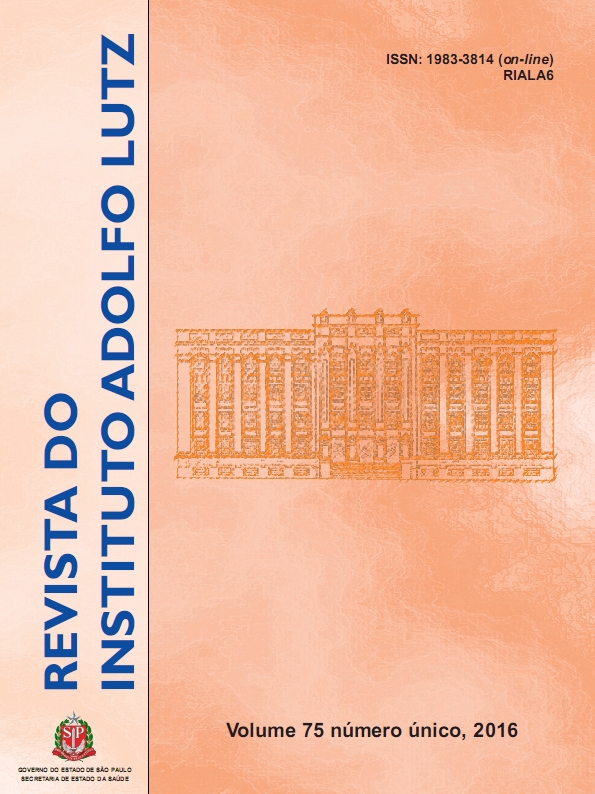Abstract
The fermented cassava starch, polvilho azedo, has wide application in bakery products, due to expansion property without yeast and gluten, which leveraged the marketing of starches modified by acid. The cassava starch is fermented and sun dried, with the generation of acids: acetic, butyric, lactic and propionic, while starches modified by acid are not fermented. In this work was produced cassava starch, dried in the sun and under oven, and modified by the acids of cassava starch fermentation, dried in UVC. All starches were compared, as the organic acids, dry starches in different conditions and only fermented without drying, as well as with the physicochemical and rheological characteristics. It was proven that solar drying favors a more acidic product and expansion property. The higher specific volume was observed for the sample fermented sun dried, followed by modified by 0.5 % lactic acid and 0.5 % acetic acid and lactic acid 1 %. The low expansion of the fermented sample and dried in an oven showed that only organic acids is not sufficient for expansion and that UV radiation (solar or artificial) directly influences this characteristic.
References
1. Maeda KC, Cereda MP. Avaliação de duas metodologias de expansão ao forno do polvilho azedo. Ciênc Tecnol Alim. 2001;21(2):139-43. [DOI: 10.1590/S0101-20612001000200003].
2. Brasil. Ministério da Saúde. Agência Nacional de Vigilância Sanitária. RDC 259, 20 de setembro de 2002. Anexo: Regulamento Técnico para Alimentos Embalados.
3. Nunes OLGS, Cereda MP. Metodologia para avaliação da qualidade de fécula fermentada de mandioca (polvilho azedo). In: Congresso Brasileiro de Mandioca; 1994; Salvador, BA: Resumos, Fortaleza, SBM.
4. Plata-Oviedo M, Camargo CRO. Effect of acid treatments and drying processes on physico-chemical and functional properties of cassava starch. J Sci Food Agr. 1998;77(1):103-8. [DOI: 10.1002/(SICI)1097-0010(199805)77:13.0.CO;2-2].
5. Demiate IM, Barana AC, Cereda MP, Wosiacki G. Organic acid profile of commercial sour cassava starch. Ciênc Tecnol Alim. 1999;19(1):131-5. [DOI: 10.1590/S0101-20611999000100024].
6. Vatanasuchart N, Naivikul O, Charoenrein S, Sriroth K. Molecular properties of cassava starch modified by different UV irradiations to enhance baking expansion. Carbohyd Polym. 2005;61(1):80-7. [DOI: 10.1016/j.carbpol.2005.02.012].
7. Marcon MJA, Kurtza DJ, Raguzzoni JC, Delgadillo I, Maraschin M, Soldi V, Reginatto V, Amante ER. Expansion properties of sour cassava starch (polvilho azedo): variables related to its practical application in bakery. Starch/Stärke. 2009;61(12):716-26. [DOI: 10.1002/star.200900132].
8. Aquino ACMS, Pereira JM, Watanabe LB, Amante ER. Standardisation of the sour cassava starch reduces the processing time by fermentation water monitoring. Int J Food Sci Tech. 2013;48(9):1892-8. [DOI: 10.1111/ijfs.12167].
9. Starling CA.Otimização dos parâmetros de produção do amido de mandioca fermentado. [dissertação de mestrado]. Goiânia (GO): Universidade Federal de Goiás; 2010.
10. Demiate IM, Wosiacki G, Cereda MP, Mestres C. Viscographic characteristics of oxidized cassava starches assessed by RVA. Publ UEPG Ci Exatas Terra, Ci Agr Eng. 2005;11(1):7-17. [DOI: 10.5212/publicatio.v11i01.840]
11. Nunes OLGS. Avaliação de parâmetros relacionados à expansão de fécula de mandioca ácido-modificada e irradiada com ultravioleta. [tese de doutorado]. Araraquara (SP): Universidade Estadual Paulista “Júlio de Mesquita Filho”; 1999.
12. Garcia ACDB, Leonel M. Efeito da concentração de ácido lático sobre a propriedade de expansão em amidos modificados fotoquimicamente. Ciênc Agrotec. 2005;29(3):629-34. [DOI: 10.1590/S1413-70542005000300018].
13. Association of Official Analytical Chemists - AOAC. Official Methods of Analysis of the AOAC International. 18th ed. Gaithersburg: 2005.
14. Pizzinato A, Campagnolli DMF. Avaliação tecnológica de produtos derivados de farinhas de trigo (pão, macarrão, biscoito). Campinas: ITAL; 1993.
15. Marcon MJA, Kurtz DJ, Maraschin M, Reginatto V, Amante ER. Rapid analysis for predicting the expansion of the polvilho azedo. Rev Inst Adolfo Lutz. 2011;70(2):199-205.
16. Aquino ACMS, Azevedo MS, Ribeiro DHB, Costa ACO, Amante ER. Validation of HPLC and CE methods for determination of organic acids in sour cassava starch wastewater. Food Chem. 2015;172(1):725-30. [DOI: 10.1016/j.foodchem.2014.09.142].
17. Zotou A, Loukou Z, Karava O. Method development for the determination of seven organic acids in wines by reversed-phase high performance liquid chromatography. Chromatographia. 2004;60(1/2):39-44. [DOI: 10.1365/s10337-004-0330-9].
18. Brasil. Agência Nacional de Vigilância Sanitária. Resolução RDC nº 263, de 22 de setembro 2005. prova o regulamento técnico para produtos de cereais, amidos, farinhas e farelos. Diário Oficial [da] República Federativa do Brasil, Brasília, DF, 23 set. 2005. Seção 1, p. 368-369.
19. Aplevicz KS, Demiate IM. Characterization of native and modified cassava starches and their use in baked products. Ciênc Tecnol Alim. 2007;27(3):478-84. [DOI: 10.1590/S0101-20612007000300009].
20. Pereira J, Ciacco CF, Vilela ER, Teixeira LS. Féculas fermentadas na fabricação de biscoitos: estudo de fontes alternativas. Ciênc Tecnol Alim. 1999;19(2):287-93. [DOI: 10.1590/S0101-20611999000200024].
21. Machado ACSDV, Diniz IP, Teixeira MAV, Birchal VS. Estudo do efeito da secagem por radiação ultravioleta nas propriedades tecnológicas da fécula de mandioca fermentada. E-XACTA. 2012;5(1):7-14.
22. Alvarado PM, Grosmaire L, Dufour D, Toro AG, Sánchez T, Calle F, Santander MAM, Ceballos H, Delarbre JL, Tran T. Combined effect of fermentation, sun-drying and genotypes on breadmaking ability of sour cassava starch. Carbohyd Polym. 2013;98(1):1137-46. [DOI: 10.1016/j.carbpol.2013.07.012].
23. Mestres C, Rouau X. Influence of natural fermentation and drying conditions on the physicochemical characteristics of cassava starch. J Sci Food Agr. 1997;74(2):147-55. [DOI: 10.1002/(SICI)1097-0010(199706)74:2<147::AID-JSFA781>3.0.CO;2-J]
24. Vatanasuchart N, Naivikul O, Charoenrein S, Sriroth K. Effects of different UV irradiations on properties of cassava starch and biscuit expansion. Kasetsart J (Nat Sci). 2003;37(3):334-44.
25. Bertolini AC, Mestres C, Raffi J, Buléon A, Lerner D, Colonna P. Photodegradation of cassava and corn starch. J Agr Food Chem. 2001;49(2):675-82. [DOI: 10.1021/jf0010174].
26. Silva GO, Takizawa FF, Pedroso RA, Franco CML, Leonel M, Sarmento SBS, et al. Características físico-químicas de amidos modificados de grau alimentício comercializados no Brasil. Ciênc Tecnol Alim. 2006;26(1):188-97. [DOI: 10.1590/S0101-20612006000100030].
27. Martinez-Bustos F, Amaya-Llano SL, Carbajal-Arteaga JA, Chang YK, Zazueta-Morales JJ. Physicochemical properties of cassava, potato and jicama starches oxidised with organic acids. J Sci Food Agr. 2007;87(7):1207-14. [DOI: 10.1002/jsfa.2805]

This work is licensed under a Creative Commons Attribution 4.0 International License.
Copyright (c) 2016 Instituto Adolfo Lutz Journal
